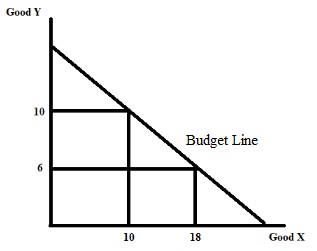Question 1. Consider the following data:
Year CPI with base year 2008
2006 50
2007 75
2008 10
a. Suppose you have been asked to provide new values for the CPI using 2006 as the base year. Fill in the following table with these new values.
Year CPI with base year 2006
2006
2007
2008
b. True or False?
Given the above information, the annual rate of inflation between 2006 and 2007 and between 2007 and 2008 are the same.
a. True
b. False
c. What is the rate of inflation between 2007 and 2008? Show your work for full credit.
Question 2. The income elasticity of demand for doughnuts is -1.5. This tells us that doughnuts are__________. If incomes decrease by 20% we can expect that the quantity of doughnuts demanded will _________.
a. an inferior good; fall by 30%
b. an inferior good; rise by 30%
c. a normal good; fall by 10%
d. a normal good; rise by 10%
Question 3. The cross price elasticity of good X for good Y is a negative number. This tells us that when the price of good Y decreases, then:
a. The quantity demanded of good Y will increase.
b. The quantity demanded of good X will increase.
c. The demand curve for good X will shift to the left.
d. The demand curve for good Y will shift to the left.
Question 4. Josie has the following information about three job offers.
Job in Minneapolis Pays $42,000 Local CPI = 140
Job in Cleveland Pays $39,000 Local CPI = 130
Job in San Francisco Pays $80,000 Local CPI = 200
If purchasing power is the sole criterion for selecting a particular job, which job should Josie take and why? Explain your reasoning and show any work needed to come to your conclusion.
Fill in the table below as well.
Job Value of job adjusted for local CPI
Job in Minneapolis
Job in
Cleveland
Job in San Francisco
He should take the job in ________
Question 5. John's budget line for goods X and Y is given in the following graph:

You are told that the price of good X is $5 and the price of good Y is $10. What is the X-intercept of this budget line? Show how you found your answer.